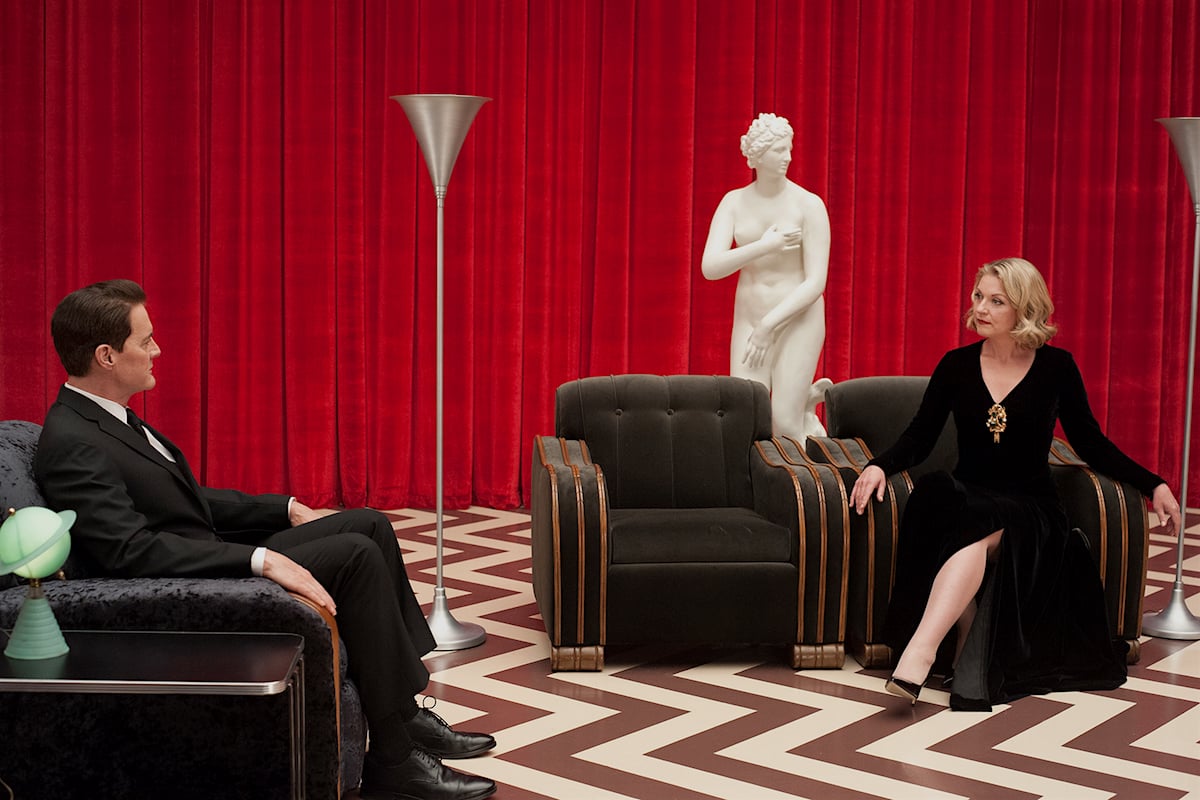
Twin Peaks is a cult classic TV series, which began airing in 1990, about an FBI agent who travels to the eponymous Washington state town to investigate the murder of its homecoming queen, Laura Palmer. Co-created by David Lynch, director of darkly surrealist films like Eraserhead, Blue Velvet, and Mulholland Drive, Twin Peaks also dabbles in the supernatural. This element of the story comes forward when agent Dale Cooper, hot on the killer’s heels, stumbles upon the entrance to two extra-dimensional realms known as the White Lodge and the Black Lodge.
The Black Lodge, a place of mysterious evil whose inhabitants only express themselves through song, dance, and poetry, takes the appearance of a room with red curtains. Contrasting against these curtains are the pale, white bodies of not one, not two, but three different statues of the Greco-Roman goddess Venus.
A Venus statue in the Black Lodge, in Twin Peaks (1990–91). Photo: Screen grab.
Contrary to popular belief, the first of these to appear in the series is not a replica of the Venus de Milo by Alexandros of Antioch, but the similar-looking Venus de’ Medici, sculpted by Cleomenes at around the same time. While the former misses her arms, the latter is still complete.
A third Venus statue, modeled after the Venus of Arles, appears in the show’s third season, which aired in 2017, almost three decades after its initial cancellation in 1991. Thought to be a copy of Praxiteles’s Aphrodite of Thespiae, the statue, which was also missing a limb prior to its restoration, assumes the position previously occupied by the Venus de Milo.
Venus of Arles (1st century B.C.E.), a copy after the Greek original Aphrodite of Thespia (ca. 360 B.C.E) by Praxiteles, at the Louvre Museum in Paris, France. Photo: Prisma/Universal Images Group via Getty Images.
The statues could be a stand-in for the deceased homecoming queen, their missing or damaged body parts symbolizing the abuse she suffered at the hands of her murderer. Venus, being the goddess of love and beauty, fits right at home in the Black Lodge’s blood-red interior, and the infatuation that mythical characters had with her mirrors the obsession Cooper develops for Laura, who at one point even assumes Venus’s pose inside the Lodge before disappearing.
Her association with the statues, which cannot move, also communicates the idea that Laura is “frozen” in time and trapped between dimensions.
Maybe both interpretations are correct, or maybe they are both wrong. Lynch’s filmmaking, so idiosyncratic it is best described by the now well-known term “Lynchian,” is defined by his use of dream logic and absurd visuals. An ode to the unknown and the uncanny, the role of the Venus statues, much like the nature of the Black Lodge and Laura’s death, ultimately remains a mystery.
As Seen On explores the paintings and sculptures that have made it to the big and small screens—from a Bond villain’s heisted canvas to the Sopranos’ taste for Renaissance artworks. More than just set decor, these visual works play pivotal roles in on-screen narratives, when not stealing the show.